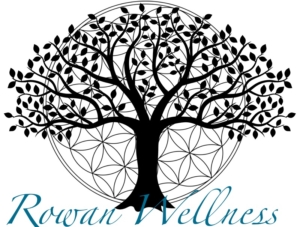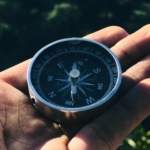CONSCIOUS END-OF-LIFE PLANNING AND TRANSITIONING
Let’s talk about a topic that we generally shun in our society; death.
None of us enjoys thinking about the death of either ourselves or our loved ones. But once upon a time, death was NOT a taboo topic as it is today. In traditional, indigenous societies, it was understood that death could be, and often was, right around the corner. Death could come at any time and was in fact, an integral part of those traditional societies.
In those times, tribes were extremely close-knit. A single death impacted the entire tribe. Because of that, few escaped exposure to grief, of their own or of the people closest to the deceased. Exposure meant a better understanding of and support for the process of dying and grieving.
Today, however, in a world that is no longer tribally oriented or organized; when we live dispersed geographically, and often emotionally, and are usually only in close contact with our nuclear family, the process of dying and grieving can be a lonely, frightening one. When death comes knocking at our door, we will often find few people who understand death, are willing to face it or talk about it.
Unfortunately, death does come for us all. If we can accept that simple fact, then we can turn to the next, vitally important, task; that of dying consciously, and well.
You might wonder, why bother? Why not run from death as long as possible, and as hard and fast as one can? If it is inevitable, why spend even a second thinking about it before the time comes?
Because how we transition into death impacts the lives of those we love; those that are now living, those that come in future generations, and those that came before us. When we die in a state of fear and denial, we do not transition well. We may even become trapped here as a “ghost;” a spirit that is out of place and time, a soul that is lost, fearful. A soul that is misplaced is energetically cut off and must become parasitic in nature in order to sustain itself. Often the misplaced soul will attach energetically to loved ones or those that live or frequent places of importance during life.
Even if a soul does not become a ghost, per se, a transition that lacks cohesiveness may impact a soul’s ability to move fully into its role as a wise, guiding ancestor for living loved ones and future generations. But a soul that departs in a state of fear, confusion, pain, or uncompleted business also impacts the past generations as well, as those ancestors that are healed and have achieved a state of grace and wisdom will now need to devote their energies to helping this newly departed soul transition fully, diluting their attentions for their living ancestors.
Not everyone gets notice that their time is upon them. Because we never know with certainty, I encourage everyone to do these things now, starting today. That does not mean living with death always in mind, but a conscious choice to live well, to live consciously, and to live compassionately.
Confront your perceptions around death and dying. We are ALL afraid of death. It’s biologically how we’re built because we’re built to survive. Furthermore, death is a transition, and transitions are, by nature, uncomfortable and scary because they are about change and the unknown. Every time our lives change in some way, particularly if we can’t fully see the road ahead, it’s natural to experience anxiety. Birth is the other major life transition we all experience, and I personally was intensely afraid during the birth of each of my children. Fear is natural. But just as I had no choice to sit frozen in fear during the births of my children or the death of my husband, nor are we given a choice to sit frozen in fear when it comes to death. We can try, but it results in wasted time.
Try to come to terms with your ideas around death, and what happens after death. Reading experiences others have with Near Death Experiences (NDEs) can be helpful. But you can explore those realms yourself through meditative states, shamanic journeys, past-life regressions, and more. If you learn to trust the visions and messages you are given, you will come to see that we are gifted with beautiful signs all the times from those that love us and are waiting for us on the other side.
Dreams can be one such source of these messages. ~ For many years after my grandmother’s passing, I often dreamt of her, many variations of the same basic theme. In the dream, my grandmother would suddenly be present; whole, healthy, and happy. I would say, “Grandma, what are you doing here? You died.” She would give me some variation of, “I was sick, so I went away for awhile to get well.” I would proceed to fill her in on all that had happened, often apprehensively because this would include the fact that my Grandfather had remarried. Expecting her to be mad or upset, she would surprise me each time by smiling gently and saying, “I know. And it’s ok. We planned it that way.” And shortly after that, she would leave, and I would feel upset that she going away again. ~ This dream repeated for years, until one day I had the insight, “Oh – Grandma is ACTUALLY visiting me. That’s why I keep having the same dream!” And just like that, that version of the dream stopped. Message received!
I’ve received similar dreams from my husband, as well as significant signs at important times since his passing. The “other side” is real, and death is not the end.
Death’s To-Do List. I get it. I know; no one needs another to-do list. But there’s work that’s important to do before you die. Most people know they need to have various legal documents prepared, such as a Will and Power of Attorney. Some go further and plan out what they would like their loved ones to do in various medical scenarios, such as “do not resuscitate” orders, as well as what sorts of final arrangements they would like (burial vs. cremation, location, music, readings, etc.) These things are all important.
But more important are the things few people think about. And these things not only allow you to die well, they allow you to, more importantly, live well too.
- Soul Retrieval.When we experience very difficult or disturbing events in our lives, often our soul will temporarily flee our body in an effort to protect itself. Sometimes people refer to this as a time they “shut down.” When the soul returns, a piece of the soul may stay away, to hold the trauma. If this process happens repeatedly, with no attempt to heal or make whole again, the fragmented incarnate soul begins to suffer greatly. This can present in various ways, such as depression, anxiety, or addictions.
A vital part of preparing for death is to bring these soul pieces back, one by one. In so doing, the soul becomes more vital through its increased wholeness, allowing one to heal and release addictions, thought forms, and patterns. It’s an iterative process that may be slow and difficult to start. I’ll write future posts on soul retrieval, but in the meantime, know that there are many shamans trained in this technique that can help you.
- Releasing thought-forms and patterns. I believe this is easier to do once you start bringing soul pieces back, but often you may need to release some thought forms in order to even get started on your work. For instance, you may need to release some fear surrounding death and the afterlife before you can accept these things need to be done, or the thought-form that this work is hippy-dippy or “woo” before you can begin to make authentic progress. It all depends on who you are and what beliefs you were raised with, acquired or adopted throughout your life. You may need to examine some religious beliefs that have to do with “be saved,” heaven and hell, and what those things mean. Confront and question anything and everything. You don’t have to release it all, but it pays to examine it all. If you take an honest look at it and it feels empowering and healthy to you, then keep it. Everything else should be discarded or modified until it feels right within your soul.
If you’re wondering what thought-forms and patterns it’s worth looking at, there are a few things that will stall/stop your progress and they can be incredibly difficult to spot because they are often buried deep. Examine and release unresolved anger, resentment, blame, guilt, and shame. Forgive yourself, forgive others. Understand that in almost every situation, we’ve played some part. Others involved played their parts. Almost never is any event or situation 100% the fault of only one participant or side. If we can acknowledge this, we can let go of many feelings of having been the victim, or we can see that perhaps we weren’t all to blame. This goes a long way towards taking responsibilityand practicing forgiveness and compassion. As you do this, you will likely have thoughts/beliefs surrounding prejudices come up. If not, look deeply; many fail to see their prejudices because they feel they’re on the right side of an issue socially or culturally. But if you’re judging or attacking someone based on one or few facts, you have a thought-form that isn’t serving you.
- Releasing Ancestral Patterns. Many of these items discussed in this article will have some overlap, and this topic in particular overlaps with many of the belief patterns discussed above. But ancestral or familiar patterns can go further, such as believing in the inevitability of exhibiting a genetic/inherited disease or addiction, inherited perceptions surrounding self-worth, gender roles, marriage and relationships, child-rearing, work ethic, and more.
- Clearing Energetic Cords. Many of us carry numerous energetic cords to various people. We will be corded most strongly to those that we have intense emotional bonds, or unfinished work with. Imagine the drawbacks of the physical electrical cords we use in real life. We often have limited outlets, inconvenient placements of outlets, cords that are too short or too long, cords that get tangled. We may not be able to conveniently use a device while it’s plugged in, we may have a breaker trip, or a blackout, etc. Now consider if we were using free-energy; there are no cords needed, no outlets, no entanglements, no outages. Powering through cords is inconvenient and inefficient. So too is running our energy bodies through cording. We are not in complete control of who’s drawing power off of us, we get over-loaded, our cords get frayed, congested, and tangled. Powering through free-energy, however, is efficient and clean. This is why it’s beneficial to clear any energetic cording between ourselves and others. This does not release an emotional bond or relationship, but it does “clean it up” significantly. If we do good energetic cord clearing, we beginning to see co-dependent relationships clear and boundaries improve. We begin to get very efficient at honoring both ourselves and others equally well. (more to come on this later…)
- Healing and Releasing Traumas. Unhealed, unreleased trauma not only results in soul loss, it stores inside the tissues of our bodies. I have some theories on how these processes work together (and will write a future post on it), but the important fact is this: unresolved emotions make us more prone to, if not outright cause various diseases, including heart disease, cancer, and auto-immune diseases. Furthermore, we pass on unresolved trauma to our children, and likely their children, perhaps even as far as 3-4 generations according to current epigentic studies (its passed on seven generations according to many indigenous traditions). This is work we MUST do, but few do. We fool ourselves into thinking we’ve healed it just because we can make ourselves forget, but our bodies and souls know and reflect the truth. This work is easier if you work through some of the items above. It is EASIER, but never easy. Get help if you need it. There are many therapies that are offering promise in an area that has traditionally been difficult to treat/resolve. EMDR, ART (Accelerated Resolution Therapy), RTM (Reconsolidation of Traumatic Memories), Fascia Release Massage, Cranial Sacral Massage, and more can be powerful adjunct therapies to help with intense traumatic episodes or PTSD.
- Communing with our souls, the other side, and our ancestors. None of this work is possible without being in right relationship with your soul. What does that mean? It means being able to comfortably sit in stillness and silence so that you can hear what your soul has to say. It means listening unflinchingly to pain, anger, blame, resentments, guilt, and other aspects of our shadows*. It also means listening to messages of love, compassion, empowerment, and truth. Once you can do this reasonably well, you can start to hear guidance from the “other side.” Make it a practice to commune with those that bring you hope and guidance, whether it’s God, Jesus, Angles, other Deities/Gods/Goddesses, Ancestors, and more. These are the beings that will help you at your times of transition, not just in death. It pays to establish a relationship now with your soul and with those that guide you. (*Note – the messages you hear should never be abusive or harsh in nature. Even negative emotions can be expressed in constructive, compassionate ways. If the messages you are hearing are maligning and feel defeatist, you are hearing a parasite (intrusive energy) rather than messages from a trusted source, e.g. your soul, divinity, or healed ancestors.
What about your familial relationships? Doing the above items will automatically improve the relationships around you. Anytime you heal yourself, you heal those around you, as well as the people that came before you and those that will come after.
At the time of death. There are important aspects at the time of death that can help ensure that a soul transitions fully and easily. Death does not happen as suddenly as many believe.
- Dying in familiar surroundings, such as at home, may bring comfort to those passing. Employing a death-doula or shaman, or having religious clergy present, can also assist all present to understand the process, and to work through the intense emotions happening when someone is transitioning.
- Allowing the body to sit unmoved for a period of time, ensuring the soul is not disturbed or rushed, can also be helpful in the transition period as the soul processes what is happening.
- Providing an exit point, such as an open door or window, also helps give a focal point to the departing soul, to move from a space that may be energetically charged and confusing, to a clean, energetically comforting natural setting.
- Know that some people wish to pass with their loved ones at their side and will hang on waiting for them to arrive. Others do not wish for their loved ones to witness their passing because they feel it will cause increased grief and pain, and so will choose a time to transition when they are not there. Know that whether you are at your loved ones side or not, they chose to go at a time that they felt was best for themselves and their loved ones, and it means nothing of failure.
- If you are present with your loved ones, say the things you need to say. If your loved one isn’t fully aware or conscious, still talk to them and include as much other information as you can, such as where they are, who is present with you, etc. Being their eyes and consciousness can help alleviate feelings of confusion and disorientation. You might also remind your loved ones to look for the shining beings or helpful spirits that are coming to welcome and assist them.
- At the time of passing, having someone that can help ensure that the energy body is cleanly detached may be helpful.
- There are many other rites and rituals that may provide comfort to the dying and the immediate family; whatever brings peace and comfort is healing and therefore helpful in allowing for a clean transition.
Please know that the above items may be considered “ideal” but not necessary. When death is sudden, there may simply be no time to make things look the way we humans think they should. Trust that the soul can transition cleanly even in sudden or violent deaths, even more so if Death’s To-Do List has been attended to. If you have had a loved one pass in this manner and you are concerned they have not transitioned well, there are many things you can do. Call on the Angels and/or Ancestors, or any other Shining Ones, that you trust in. Ask them to find and assist your loved one to cross over. Talking to your loved one even after their passing, either out-loud or in your head, or in writing, can also be a means to convince them to cross over. Assuring them that you love them, that you grieve, but that you’ll be ok will convince them their work here is done. If you’re still in doubt, call in a shaman or other person that is skilled in working in this realm. They can investigate whether your loved has transitioned fully, and if not, call in those helping spirits that will be most helpful and comforting.
Death is a natural part of life. A necessary part of life. It is one of the most painful events we will ever experience, to watch those we love pass. But a great deal of healing comes for all when we move towards death with intention and consciousness.



